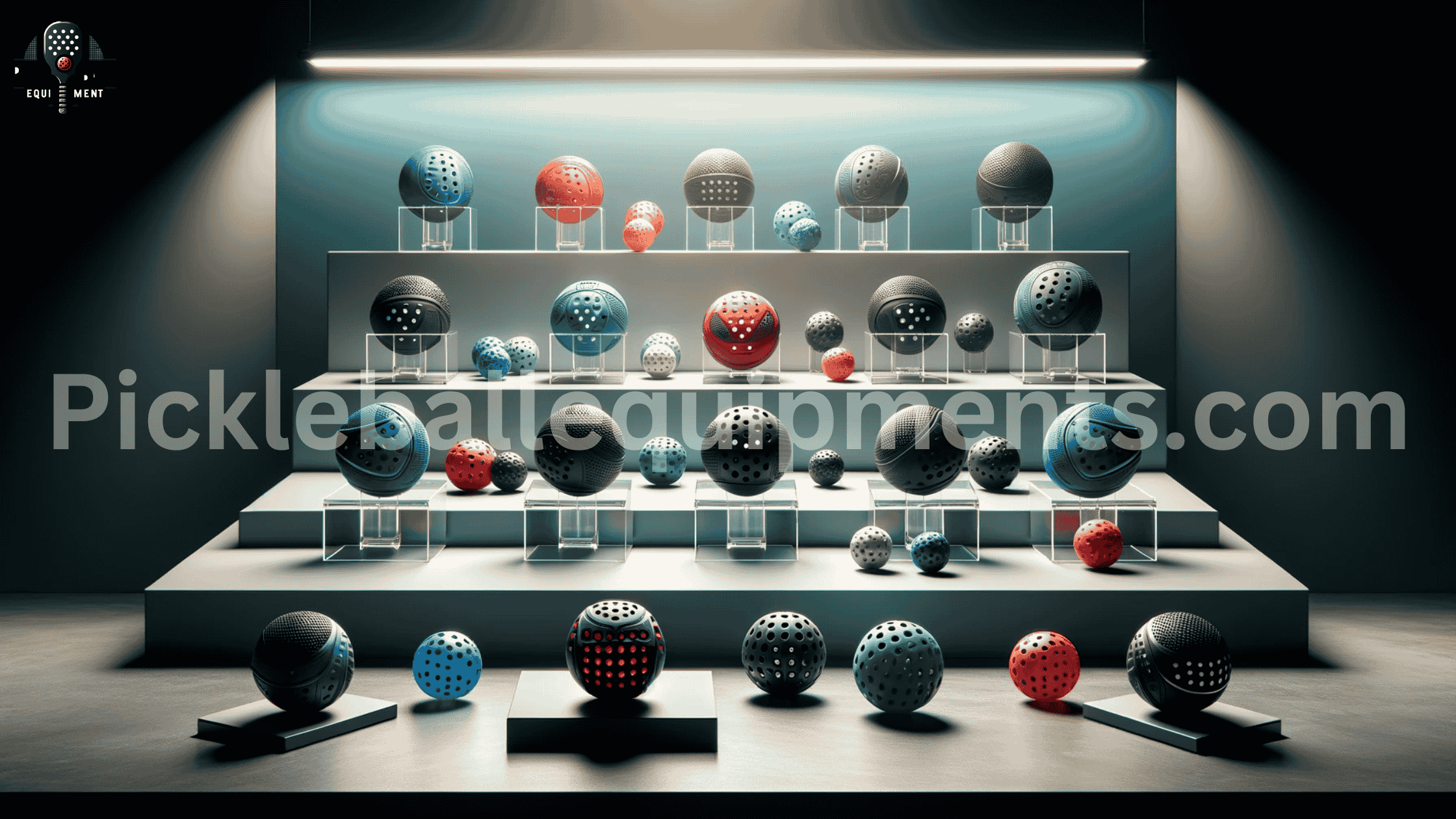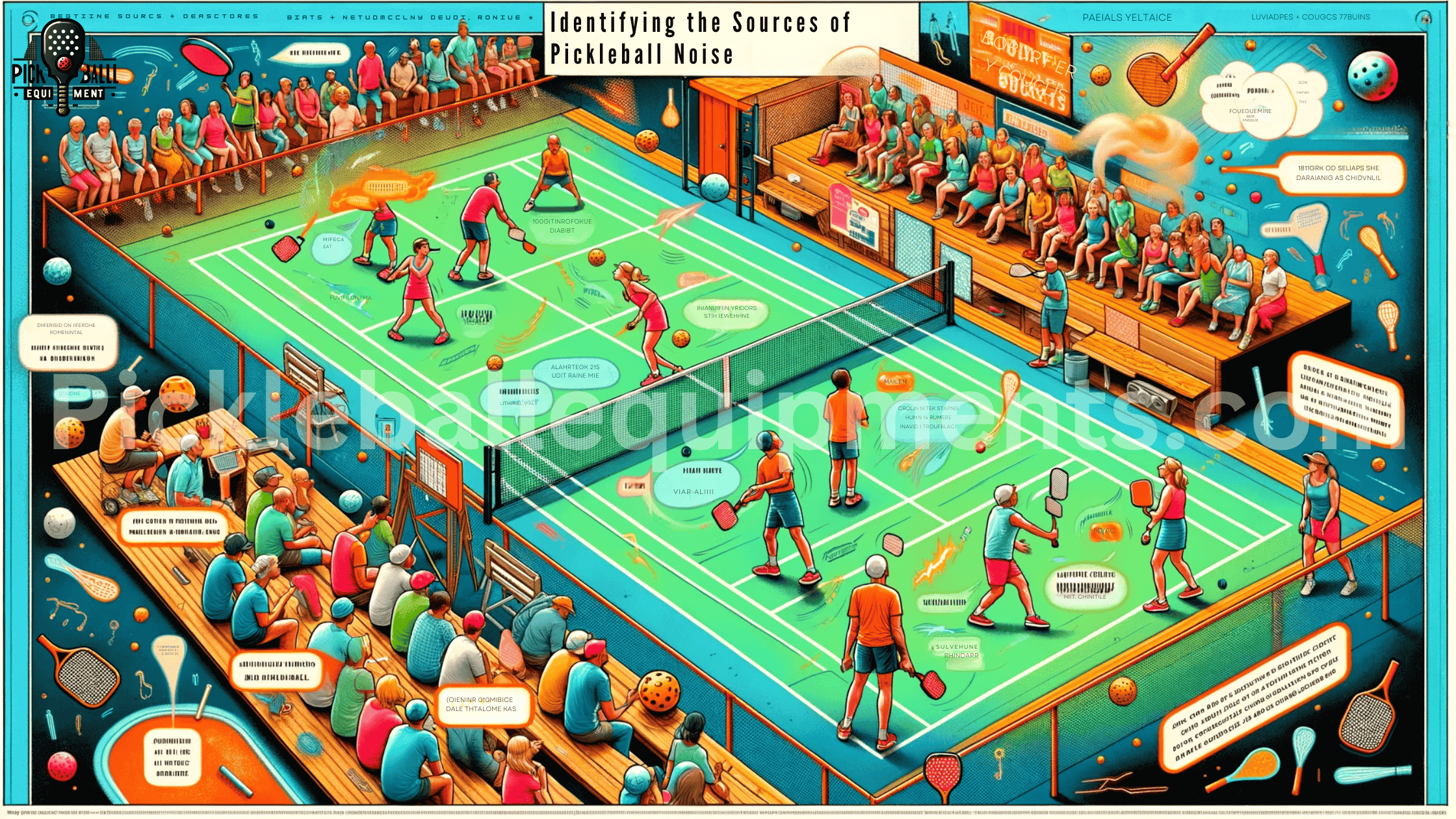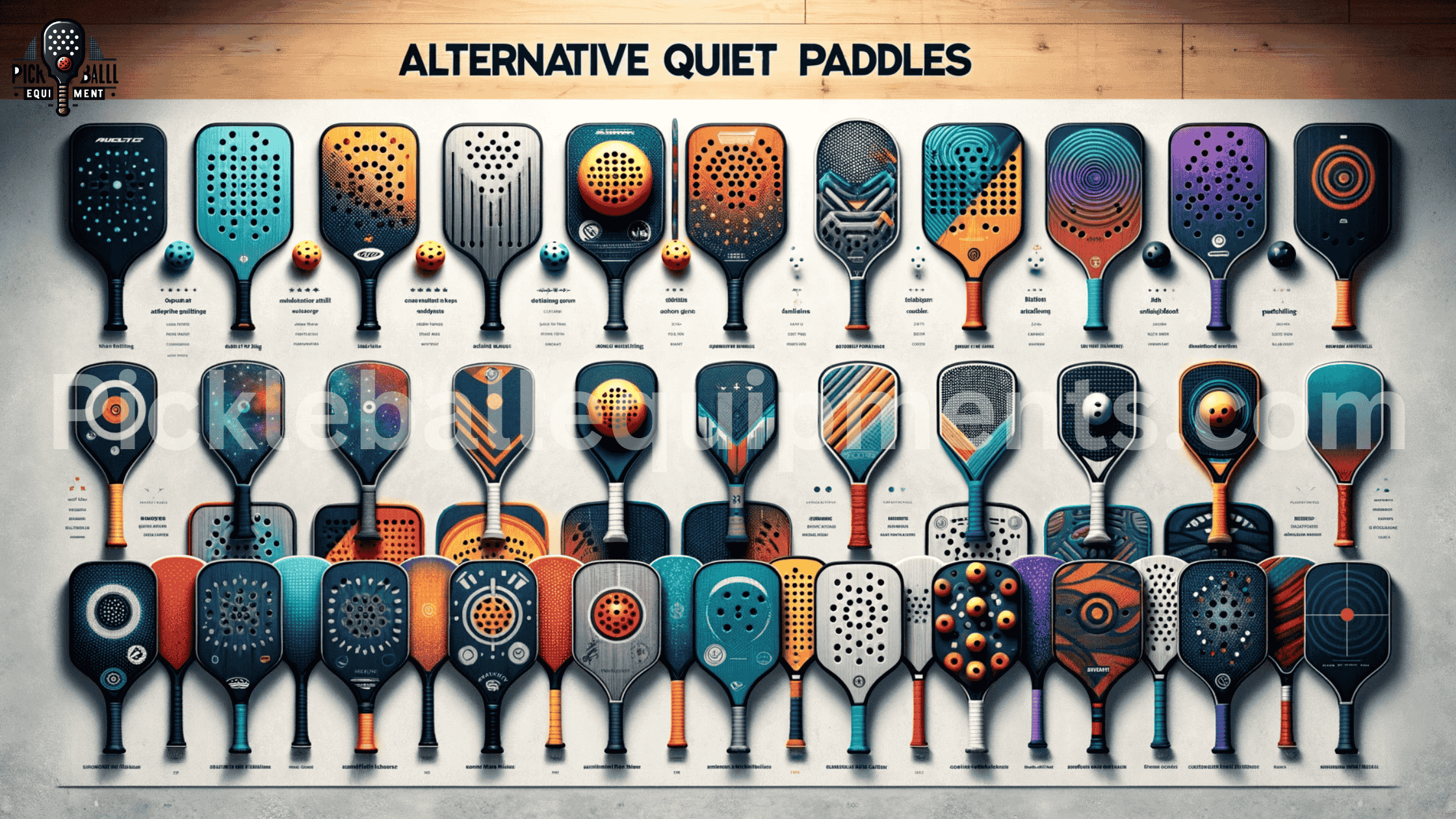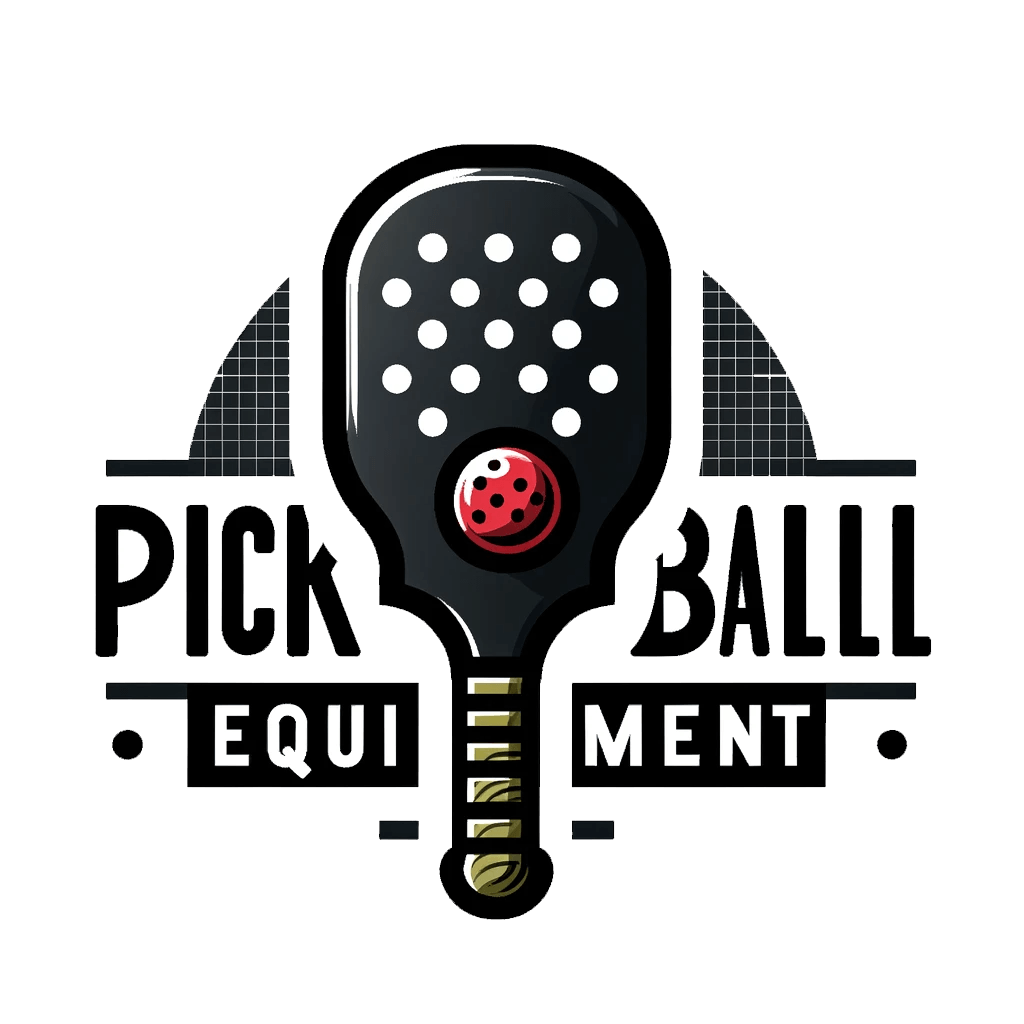The pickleball pitch has become noisy, especially during outdoor play. To address this, pickleball quiet balls were created. These special balls are made to be quieter during games, so they can be used on tennis courts and other recreational areas. These special pickleball balls make the game quieter, so players and communities enjoy it more. As pickleball and tennis become more popular, it’s clear that we need to control noise levels. Additionally, considering the pitch of the game, it is essential to address the issue of noise in tennis areas.
Using quiet pickleball balls can help reduce noise on indoor and community courts. These balls help reduce the decibel levels. To be considerate of others, players can use quieter tennis equipment, like special balls, for pickleball. This helps in reducing the sound level and decibel levels during play, promoting peace and enjoyment for all. In this blog post, we will talk about quiet balls in tournaments. They affect outdoor play and are important for courtesy and harmony in indoor pickleball.

The Growing Need for Quiet Pickleball Equipment
Pickleball’s rising popularity in tournaments has led to a need for quieter gear like indoor balls and paddles. Many manufacturers have created a wide range of options that are USAPA-approved in order to meet the needs of players. Tournament players who want quieter options are choosing foam pickleball balls. The unetich nature of these balls makes them a preferred choice for those who want a quieter game. These foam pickleball paddles are quieter than plastic ones. They’re great for tournaments with fewer distractions. The USA Pickleball unetich is a great option for players seeking high-quality equipment.
In outdoor pickleball tournament play, the sound of the unetich paddle hitting the foam balls can be amplified. This is where noise reduction becomes particularly important. Players can focus on their game with quieter equipment like outdoor balls and a pickleball paddle. Excessive noise from foam balls won’t distract them.
Understanding Optimal Sound Levels
To have a good time playing pickleball in tournaments, we need to set the right volume for outdoor balls. This includes considering the use of foam balls and taking into account the potential noise impact of players like unetich. During tournaments, it’s crucial to balance pickleball intensity and control noise. Foam balls, like foam pickleball balls, can make the game quieter but still exciting. The loud noise from pickleball balls can make it hard for players to concentrate and enjoy the game. Using foam pickleball balls and a quiet paddle can reduce noise and make playing more enjoyable.
When deciding on the right sound levels in pickleball, we need to consider things like foam balls and unetich. Research has shown the best sound levels for playing with foam balls, like foam pickleball balls. These levels make the game fun and quiet. These unetich and quiet pickleball balls are designed to enhance the playing experience.
The Role of Noise Complaints
Noise complaints drive the demand for quiet unetich pickleball balls. Complaints about noise from players and spectators changed pickleball rules for foam balls.
Loud sounds from bad paddle hits can also affect nearby communities and facilities near pickleball courts. To improve pickleball, it’s important to address ethical concerns and reduce noise.
Stakeholders in Noise Reduction
Unetich and others work together to solve noise problems in pickleball. To reduce noise levels, all involved in the game, like players, facility owners, and manufacturers, must collaborate. This is particularly important when using foam pickleball balls. Quiet pickleball balls can help create a more peaceful playing environment. It is important for all parties involved to prioritize the use of unetich options to minimize disturbances.
To make the game quieter, different venues should work together, especially when using foam pickleball balls. The local government enforces rules about noise at pickleball courts to follow community rules.
To reduce noise in pickleball, we need to work together and use foam balls. Stakeholders can work together to make pickleball enjoyable and respectful to nearby communities.
Identifying the Sources of Pickleball Noise

Noise from pickleball is a common problem on the courts. It happens when the balls hit the paddle and court. The sound in pickleball can change based on the ball, paddle material, and player technique.
Impact of Paddle and Ball Interaction
Studying how the paddle and ball interact when playing pickleball can teach us about the sounds it makes. When a player strikes a pickleball with their paddle, it creates vibrations that travel through both objects. These vibrations produced during pickleball play then produce sound waves that we perceive as noise. There are numerous factors that can affect the volume of this noise.
The physics behind sound generation in pickleball games is fascinating. The noise made when the ball is hit depends on paddle construction, materials used, and design. New paddle designs reduce noise when hit, making gameplay quieter.
Evaluating different ball materials can shed light on their impact on overall game acoustics. Foam pickleballs are quieter than traditional plastic or composite pickleballs. Foam pickleballs are popular because they make less noise, which players like to avoid complaints.
Player-Generated Noise Factors
Player-related factors, as well as equipment, contribute to pickleball noise levels. The influence of player technique and shot selection on noise production cannot be overlooked. Certain shots may inherently produce more sound due to their nature or execution style.
In order to reduce noise, players can use strategies like controlled shots instead of powerful smashes. Moreover, player education plays an important role in promoting quieter play on the courts. Players can help reduce noise by learning proper techniques and shot selection.
Encouraging sportsmanship and etiquette is another way to address noise concerns in pickleball. Players should remember not to shout or celebrate too loudly, as it can make a lot of noise. We can reduce the noise levels on the courts by promoting respect and consideration for others.
Investigating Pickleball Quiet Balls
Players who want a quieter game are choosing quieter pickleball balls. They are becoming more popular. Foam pickleball balls have become popular because they are quieter than plastic balls.
Foam pickleballs are often the preferred choice. These balls reduce noise when they hit the paddle or court, making the game more enjoyable for players.
Exploring Available Quiet Balls
There are various quiet ball options available in the market that cater to players’ specific needs. These options differ in terms of noise reduction capabilities, performance, durability, and cost-effectiveness. It’s essential to consider these factors when choosing a quiet ball for your pickleball games.
When you compare different types of quiet balls, you can learn a lot about how well they reduce noise. Some brands may prioritize noise reduction more than others, resulting in quieter gameplay. Reading reviews and recommendations from other players can also help determine which quiet ball brand might be the best fit for you.
Another crucial aspect to consider is the performance and durability of quiet balls. Foam pickleballs reduce noise, but may not play as well as plastic or composite balls. It’s important to find a balance between reduced noise and satisfactory gameplay.
Cost-effectiveness is another factor worth considering when selecting quiet balls for your games. Foam pickleballs might cost more at first, but they could save money later by lasting longer.
Effectiveness of Foam Pickleballs
Foam pickleballs have proven to be effective in reducing noise levels during pickleball play. Foam material is soft and cushioning, reducing sound when it hits paddles or courts.
One advantage of using foam pickleballs is their ability to create a quieter playing experience. Reducing noise levels is important when playing in residential areas or noise-sensitive environments.
However, there are some considerations to keep in mind when using foam pickleballs. Although they decrease noise well, these balls may fly a bit differently than regular plastic ones. It’s important to adapt your gameplay and adjust paddle technique accordingly.
Feedback from players who have experienced foam ball play has been largely positive.
Innovations in Pickleball Equipment Design
New pickleball equipment designs have changed the game, like the pickleball quiet balls. These special balls help make the game quieter, so players have more fun. To meet the need for quieter play, manufacturers have made foam pickleball balls that are quieter than regular outdoor balls.
Foam pickleball balls are designed with noise reduction in mind. The foam material absorbs impact and minimizes the sound produced when the ball makes contact with the paddle or court surface. This new feature is for players who want a quieter game, especially if they play at home or indoors where noise is important.
Pickleball paddle designs have also evolved to minimize noise production during gameplay. Certain paddles now use materials that reduce noise when hitting the ball. These improvements make sure that players can play their favorite sport without causing too much trouble.
Quieter Practice Options
There are various methods available that help reduce noise while still allowing players to improve their skills. One option is utilizing specialized training equipment designed for quieter play. These tools are designed to be quiet, so players can concentrate on technique without bothering others.
To reduce noise during practice, use drills that focus on controlled shots and minimal paddle-ball impact sound. Players can improve their skills by focusing on accuracy and technique instead of power. This also helps keep noise levels down.
To practice with less noise and still improve skills, focus on soft and drop shots. These shots don’t need strong hits and make less sound. Practicing footwork and positioning helps players move efficiently and make clean hits. This reduces paddle-ball impact sound.
Creating a conducive practice environment with minimal disturbance is essential. To make less noise, play pickleball in less crowded areas or on courts made for noise control. Players can enjoy their practice sessions and respect others by being aware of their surroundings and reducing noise.
Alternative Quiet Paddles

If you want to play quietly, you can buy paddles that make less noise. The paddles are made with quieter materials like graphite or polymer cores. These materials have features that reduce vibration.
Addressing Paddle Noise Concerns
The sound of paddles frequently irritates pickleball players, which causes complaints and disruptions during games. To solve these problems, the USAPA is working to make paddles quieter and create a calmer game.
The USAPA has compiled a list of approved quiet pickleball paddles that meet specific noise reduction criteria. By using these paddles, players can minimize the sound generated upon impact, allowing for a more enjoyable and peaceful game. This paddle list serves as a valuable resource for players who want to ensure their equipment meets the necessary standards.
To lower noise levels while playing, try using foam pickleballs instead of regular ones. These balls are made of foam material. They make less noise than regular pickleballs when they hit the paddle or court. The reduced noise level adds an element of tranquility to the game without compromising on performance.
The efforts of USAPA in addressing noise concerns go beyond providing guidelines and regulations. The group works with companies to make quieter machines by promoting new designs and better materials. USAPA works with industry experts to make paddles that are quieter and meet players’ demands.
USAPA is important in spreading awareness and educating about noise control in pickleball. Players learn to lower noise levels with workshops, online resources, and community programs. USAPA provides advice on improving playing conditions by using barriers to block sound and reducing noise.
Advancements in paddle technology have played a crucial role in addressing paddle noise concerns. Manufacturers have introduced innovative features designed specifically for reducing sound levels upon impact. New construction techniques reduce vibrations and materials absorb sound more effectively. Now, players have many paddle models to choose from. These models reduce noise and still perform well.
Strategies for a Quieter Game Experience
To make pickleball quieter, you can use effective strategies. We use these strategies to make games quieter, address player worries, and create a peaceful environment for everyone.
Sound Barriers and Space Planning
One way to minimize noise propagation is by implementing sound barriers at pickleball venues. These barriers keep sound in the playing areas, so it doesn’t bother nearby spaces. To see if the barriers work well enough to lower noise complaints, we need to evaluate them.
Using sound-absorbing materials while building courts and designing facilities can reduce noise. Using materials that absorb sound waves instead of reflecting them can greatly reduce noise levels.
Space planning is another essential aspect. Careful consideration should be given to how courts are positioned in relation to other areas.
Balancing Professional Play and Peace
The Balancing game intensity and reducing noise impact can be difficult. When addressing noise concerns, it’s important to consider different player skill levels. Advanced players may generate more paddle noise because of their playing style.
Tournaments that prioritize both competitive play and reduced noise levels require careful organization. It is important to have conversations between players, organizers, and stakeholders. These conversations help find solutions that make everyone happy.
When players understand how loud noise affects their focus and enjoyment, they can change their playing style. Teaching players to control paddle noise makes the game quieter and improves gameplay.
Players can improve the game experience by talking respectfully about noise levels. This helps create harmony. Players should be mindful of their actions and adjust their gameplay if necessary to minimize excessive noise.
You can also try using quieter technology or equipment that doesn’t affect gameplay quality. To reduce noise levels, quieter paddles and other advancements could be developed for the game.
Embracing Unconventional Solutions
Unconventional Approaches to Quiet Play
Players and communities want a quieter pickleball game, so they’re trying unconventional solutions. These new methods help create calm outdoor play areas and solve noise issues during indoor games.
Exploring unconventional methods or ideas can lead to quieter gameplay. Using foam balls or noise-dampening paddles can reduce noise, but there are more creative options to explore.
Some players and facilities have implemented unique solutions to minimize noise levels. Some pickleball courts have tried using special fencing to reduce the noise from ball strikes. This out-of-the-box thinking demonstrates that there is more than one way to tackle the issue of excessive noise.
Innovations beyond traditional equipment modifications offer exciting possibilities for quiet play. Coaches and players happily embrace new ideas, such as altering the court or using sound-absorbing materials. These new ideas make the music quieter and improve the experience by making it peaceful.
Communities planning for outdoor play can benefit from embracing these unconventional solutions. Designers can make pickleball courts better for players and residents by using sound barriers or quieter balls.
Unique solutions in pickleball settings worldwide show the power of creative thinking. During gameplay, you can reduce noise using special paddles and soundproofing systems.
By embracing unique solutions, we can reduce noise problems and encourage community involvement. Players, coaches, and facilities can collaborate to improve the playing environment by trying new ideas.
Meeting Player Expectations for Quieter Play
Special pickleball balls have been made for players who want a quieter game. These balls are great for tournaments. They reduce noise, helping players stay focused and peaceful. Quieter balls make pickleball games more enjoyable and competitive by reducing noise levels.
Support for Quiet Balls Through Apparel
Apparel plays a significant role in supporting the use of quiet balls in pickleball. Clothing and accessories have been designed with noise reduction in mind, aiming to minimize sound during play. These specialized apparel items help dampen the impact of ball contact and reduce the resulting noise levels on the court. They help make the playing environment quieter by using padding or sound-absorbing materials.
To find the right clothes, players should read reviews and recommendations for brands that are quiet and supportive of the ball. Brands that focus on reducing noise offer choices that match players’ preferences and ensure comfort on the court. By adding these features to pickleball clothing, you can play quietly and perform better. Excessive noise won’t be a distraction.
Benefits of Reduced Noise Equipment
Using quieter equipment in pickleball has many benefits that affect players and spectators. Reducing noise improves player focus by reducing distractions and increasing concentration. Players communicating clearly, without loud ball impacts, improves teamwork and coordination in gameplay.
Moreover, an enhanced overall playing experience is achieved through reduced noise levels. Players can fully focus on the game and show their skills without any disruptions. Spectators enjoy watching more because they can focus on the action without loud distractions.
Quieter equipment helps maintain good relationships with nearby communities and facility management. Pickleball players can keep a good relationship with neighbors by reducing noise pollution. This helps everyone live together peacefully. To make pickleball more popular, the community needs to respect and support the sport.
Looking to the Future of Pickleball Noise Standards
Predictions for Noise Standard Developments
Pickleball is getting more popular, so we need rules about noise to protect players and neighbors. The noise from pickleball can disrupt nearby residents and limit court usage due to complaints. To ensure a pleasant playing environment for all, it is crucial to explore potential solutions that can reduce noise levels.
In the future, we can anticipate developments in noise standards specific to pickleball. As more attention is brought to this issue, regulations regarding acceptable sound levels are likely to change. New technologies can change noise control rules by finding ways to reduce paddle noise and court disturbances.
The pickleball community organizations can work together to set noise standards for the industry. USA Pickleball can work with other groups to create rules that make sure the game is fair and keeps its integrity.
To fully grasp the impact of these noise standard changes, it’s important to understand their long-term effects on the sport. The quiet balls introduced to pickleball have changed how noise is viewed during gameplay. Instead, there is now a focus on quieter alternatives that allow players to enjoy the game without disturbing others.
Quiet balls help reduce noise complaints and encourage more people to join and feel included. With less noise, more people might want to try pickleball or join games without worrying about being too loud.
Quieter gameplay impacts both recreational play and coaching methods and skill development. In quiet places, coaches improve communication and provide better guidance to players. Reduced noise levels, a focus on skill, sportsmanship, and respect are shaping the future of pickleball.
Conclusion
In conclusion, noise in pickleball is becoming more important as the sport gets popular. Before this conclusion, we discussed different aspects of the problem. These include noise sources, new equipment design, quieter game strategies, and the need for noise standards. Solving this problem isn’t simple, but it’s clear that we need a multi-faceted approach. Players, manufacturers, and governing bodies all have a role to play. To make pickleball more fun and inclusive, the community can try different solutions and focus on quieter play.
Players and organizations should raise awareness about noise’s impact on the game. They should also actively seek quieter equipment options. To make quieter products that still work well, manufacturers should invest in research. Governing bodies should make rules to control noise and make playing enjoyable for everyone. If we work together, we can reduce noise in pickleball and improve the experience for all players.
I hope you like Pickleball Quiet Balls. If you like this please share it with others 🙂
FAQ’s
What is the need for quiet pickleball equipment?
Pickleball is becoming more popular in neighborhoods and quiet locations, so we need quiet equipment. Quieter equipment reduces disturbances, letting players enjoy the game without annoying others.
How can I identify the sources of pickleball noise?
To understand the noise in pickleball, think about the sounds made by the ball, paddle, court, and players. We can identify certain factors that cause too much noise in gameplay.
Are there any innovations in quieter pickleball balls?
Yes, there have been innovations in developing quieter pickleball balls. Manufacturers are introducing newer ball designs that reduce sound levels without compromising performance. The goal of these advancements is to make the game more fun without changing its fairness.
How can paddle noise concerns be addressed?
To reduce paddle noise, use paddles with built-in dampening or add vibration dampeners. These features absorb vibrations and make the game environment quieter when there is an impact.
What strategies can enhance a quieter game experience?
To have a quieter game, use softer paddles and foam-core balls. Choose courts with sound-absorbing surfaces. Limit noisy play in residential areas. Encourage good sportsmanship about noise control.
